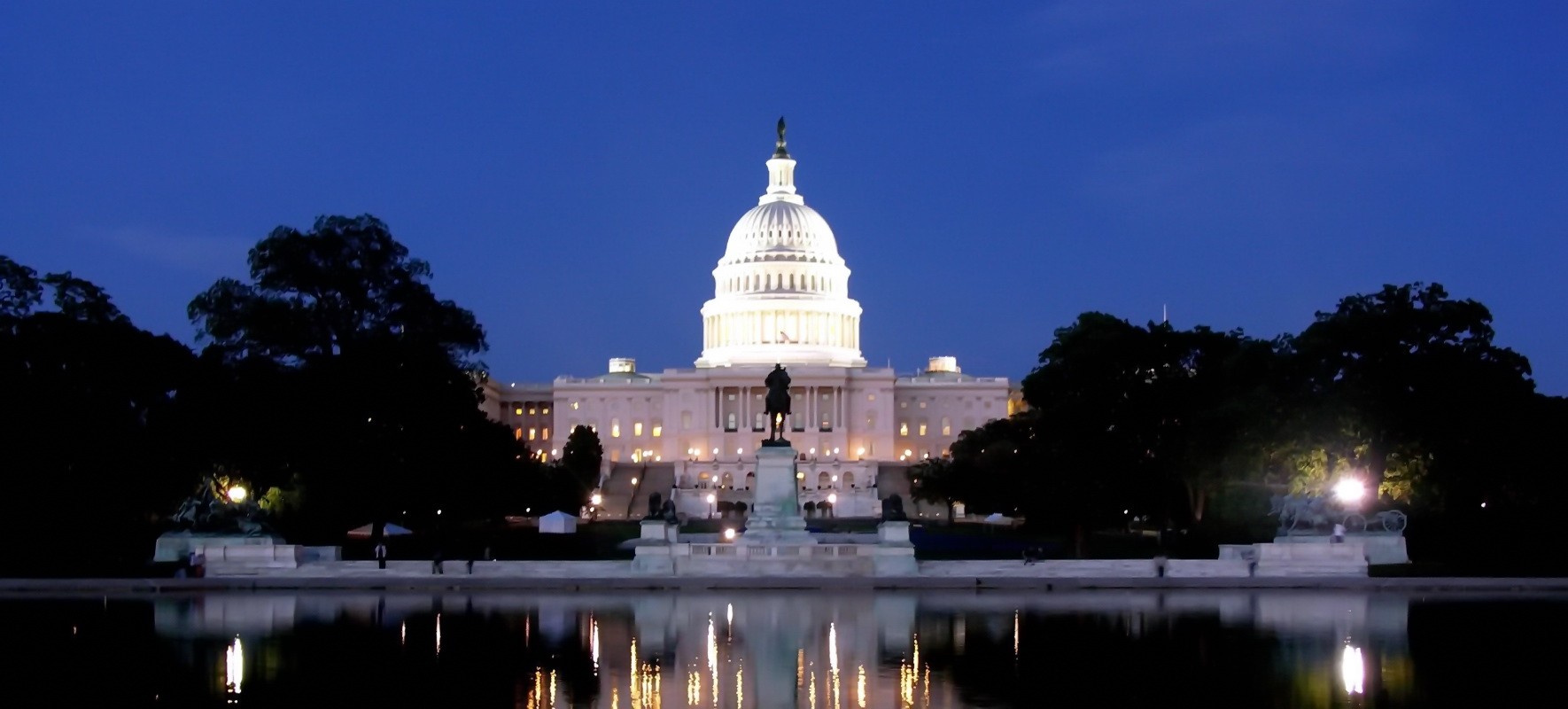Mind the Pandemic Gap: How States Propose to Bridge the COVID-19 Revenue Shortfall

Federal Tax Policy: Navigating the New Political Landscape
Register Now*Note: This Kenan Insight is based on the joint UNC Tax Center-AICPA webinar titled “Tax Policy and Planning: How States Propose to Bridge COVID-19 Revenue Shortfall.” View the full discussion.
On March 19, 2020, California became the first U.S. state to issue a stay-at-home order in response to the global COVID-19 pandemic. Over the subsequent three months, 42 states and territories issued similar mandates for varying periods of time.1 As businesses were forced to close and workers were laid off, state policymakers were left scrambling to plan for an uncertain future.
The pandemic’s economic disruptions have already created a substantial negative effect on state budgets, with expected declining revenue and rising expenditures, especially in healthcare. Projections remain a moving target as states continue to grapple with countless unknowns, most notably factors related to the public health crisis such as rising COVID-19 infections, crippled healthcare systems, and impediments to vaccination implementation. Although the situation appeared most dire during the first months of the pandemic, many forecasts still indicate there will be significant deficits. For example, in July 2020, the Center for Budget and Policy Priorities projected a budget shortfall of $290 billion in the 2021 fiscal year and an additional $155 billion shortfall in fiscal year 2022. This is about 15 percent greater than the two-year combined budget shortfall for 2010-2011, in the midst of the Great Recession.2 In December, Moody’s Analytics estimated a revenue impact of between $172 billion and $308 billion for both state and local governments over the 2021 and 2022 fiscal years—which includes states draining their reserve accounts.3 However, the severity and length of such budget shortfalls could vary significantly from state to state.
Timing compounds challenges
The COVID-19 pandemic hit the U.S. as many states were finalizing their budgets for fiscal year 2021—with a significant drop in economic activity occurring in the last quarter of the fiscal year for most states. Many state legislatures had already adjourned or were forced to suspend operations due to the health emergency. Most state fiscal years run from July 1 to June 30, with budgets being prepared and approved well in advance. The timing left policymakers limited time and resources to adjust their budgets. Now, a year later, states still face an incredible amount of uncertainty in their forecasting. One of the reasons is that the current recession is precipitated by a costly public health crisis, making it difficult for policymakers to use the data and lessons learned from previous recessions as guideposts. The nature of the pandemic’s effects—such as a meteoric rise in unemployment, the mass movement toward remote work and ongoing strain on such industries as travel, tourism and hospitality—has made it harder to predict long-term economic impacts.
Taxes have taken a hit—but it could have been worse
Although every state budget has been affected by COVID-19, the magnitude of the impact has varied based on several factors, including the effectiveness of the state’s public health response and the makeup of it revenue portfolio. Using data from the 2017 fiscal year, the Urban-Brookings Tax Policy Center found the breakdown of state government general revenue to be the following4:
| Intergovernmental Transfers | Sales Tax | Charges & Miscellaneous | Individual Income Taxes | Other Taxes | Corporate Income Taxes |
|---|---|---|---|---|---|
| 33.3% | 23.1% | 18.8% | 17.8% | 4.7% | 2.3% |
Taxes account for about half of state revenues. According to an analysis by the Tax Foundation using U.S. census data, in the final quarter of fiscal year 2020 revenues were 29 percent lower than they were in the same quarter the previous year. Overall, there was a 5.5 percent decline in annual collections.5 However, the impact to states’ tax revenues varied greatly depending on their sources of revenue.
| State Tax Revenue Performance, FY 2019 vs. 2020 Revenue Changes for Full Fiscal Years and for the Final Quarter of Each Fiscal Year |
||
|---|---|---|
| Tax Type | Year-over-Year | Quarter-over-Quarter |
| Individual Income Taxes | -10.1% | -38.7% |
| Corporate Income Taxes | -17.5% | -50.9% |
| General Sales Taxes | -0.3% | -17.3% |
| State Property Taxes | 2.0% | -2.5% |
| Other Taxes | -2.6% | -18.8% |
| Total Tax Collections | -5.5% | -29.0% |
Sources: U.S. Census Bureau; Tax Foundation calculations. Retrieved from https://taxfoundation.org/state-tax-revenues-beat-expecations-fy-2020/ |
||
Some revenue sources, like sales tax, did not decline as precipitously as expected. Although the initial shutdown caused large losses in sales tax revenues in April and May 2020, the summer saw a sharp recovery as states began to reopen. Many state and local governments actually ended up seeing positive rates. One reason many states did not bear the full brunt of sales tax shortfalls is due to the implementation of economic nexus laws over the last several years. Economic nexus allows states to tax remote sales. Prior to economic nexus, states only required sales tax from businesses with a physical presence in the state. In 2018, the Supreme Court ruled in favor of South Dakota in South Dakota v. Wayfair, allowing states to tax sales based on a business’ level of economic activity within the state, including sales revenue, transaction volume or a combination of both. This new threshold became particularly useful during the pandemic as consumers moved away from purchasing from brick-and-mortar stores to online shopping.
Personal income tax revenue, although down, was not hit as significantly as it was during the Great Recession. There are a few reasons for this. First, income tax filing dates were delayed in many states, resulting in 2020 fiscal year losses being carried over to fiscal year 2021. Second, the federal government helped bolster income tax revenue through increased unemployment benefits and programs like the Payroll Paycheck Protection program (PPP) to help keep small businesses open (and their employees working). Third, most of the employment loss was among lower-wage jobs, which is not the primary base for income taxes. As the recession lingers and businesses struggle to survive, there may be an uptick in unemployment, causing states to experience increased income revenue loss in the next several fiscal years. Finally, corporate income tax, although a smaller part of base state revenue, saw more significant declines.
Tax policies individual taxpayers and businesses might expect in 2021
Typically, increases for major taxes like sales and income are not the primary way states deal with budget deficits. Rather, they tend to first employ budget cuts and then tap into federal stimulus funds. Spending down rainy-day funds and increasing taxes are generally the last choices for rectifying state budget shortfalls.
One way state policymakers may try to raise revenues is to find ways to increase corporate taxes for companies performing increasingly well, especially during the pandemic. Two ways to do this would be to institute or increase corporate excess profits taxes, which allows to states to place a special tax on corporate income above a certain threshold; or expand corporate income taxes to include foreign-source income.
Additional tax policies lawmakers may look into implementing or increasing to spur state revenues include:
- Gross receipts taxes on digital advertising and business services
- Wealth taxes
- Stock transfer taxes
- The elimination or postponement of certain corporate tax credits
- Increases in excise taxes on such items as marijuana, cigarettes, gasoline, sports wagering and carbon emissions
- Retail sales taxes on additional services such as motor vehicle, financial and insurance services
The feasibility of implementing any of these revenue sources is highly state-specific—with differences in legality, administrative burden and whether the consequences/equity would be controversial among state constituents.
Considerations for state governments
The pandemic has exacerbated many trends in how people work, live and travel, leading to fundamental changes in how our economy operates—for which state governments need to be prepared. But an opportunity exists for policymakers to use this challenging period to rethink some of the outdated policy and funding mechanisms that affect their constituents’ lives.
It is also imperative that, in these uncertain times, policymakers be not reactive, but rather thoughtful and transparent in their decision-making, and consider the long-term impacts of their decisions. Now is an optimal time to find ways for increased efficiencies and to make appropriate staffing adjustments so that state governments run more smoothly and meet the needs of all they’re called to serve. As policymakers look toward recovery, it is vital that they consider policies that will ensure equitable prosperity and make investments in capital that will improve the lives of generations to come.
1 Moreland, A. et al. (2020, September 4). Timing of State and Territorial COVID-19 Stay-at-Home Orders and Changes in Population Movement – United States, March 1 – May 31, 2020. CDC Morbidity and Mortality Weekly Report. Retrieved from https://www.cdc.gov/mmwr/volumes/69/wr/mm6935a2.htm
2 McNichol, E. & Leachman, M. (2020, July 7). States to Face Large Shortfalls Due to COVID-19 Effects.. Center on Budget and Policy Priorities. Retrieved from https://www.cbpp.org/research/state-budget-and-tax/states-continue-to-face-large-shortfalls-due-to-covid-19-effects
3 Luhby, T. (2020, December 19). Congress leaves state and local governments facing gaping budget holes. CNN. Retrieved from https://www.cnn.com/2020/12/19/politics/state-local-government-congress-relief/index.html
4 “Intergovernmental transfers” primarily refers to money transferred from the federal to state government—largely for public welfare programs like Medicaid. “Charges and miscellaneous” includes tuition to public universities, highway tolls and payments to public hospitals. “Other taxes” includes license fees, estate taxes and any tax not included in sales and use, individual income or corporate income taxes. See Tax Policy Center. (2020, May). Tax Policy Center Briefing Books: The State of State (and Local) Tax Policy. Retrieved from https://www.taxpolicycenter.org/briefing-book/what-are-sources-revenue-state-governments
5 Walczak, J. (2020, September 18). New Census Data Shows States Beat Revenue Expectations in FY 2020. The Tax Foundation. Retrieved from https://taxfoundation.org/state-tax-revenues-beat-expecations-fy-2020/#:~:text=Income%20tax%20revenues%20in%20the,10.1%20and%2017.5%20percent%2C%20respectively

